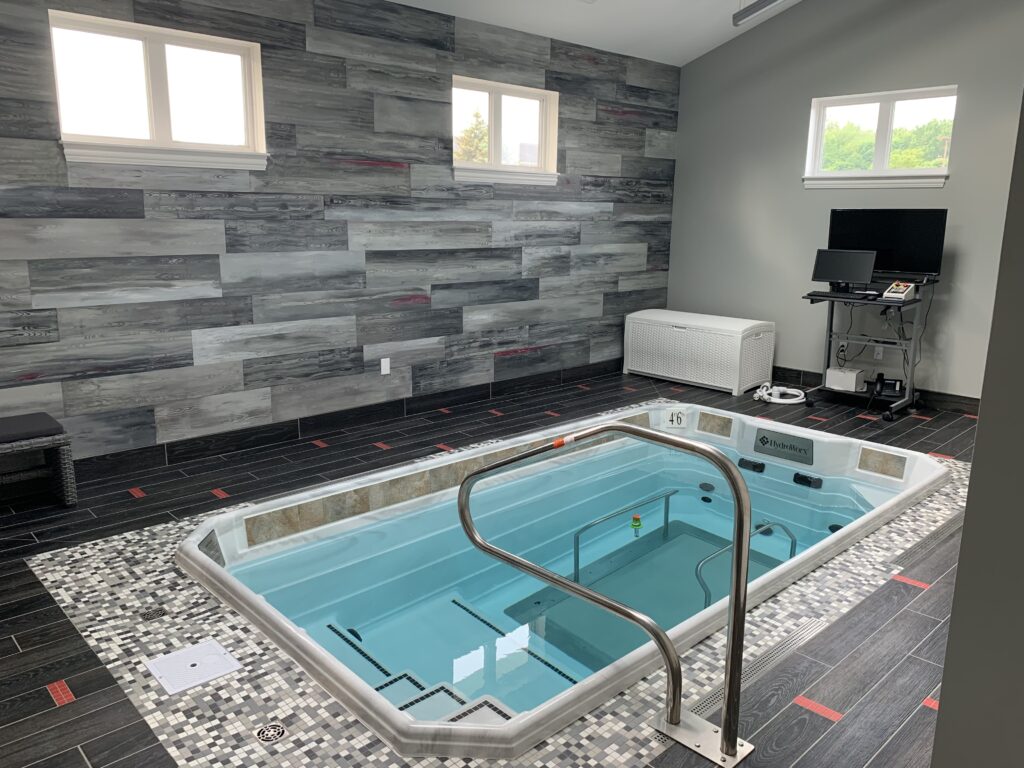Bilateral Quadriceps Tendon Tear Recovery Case Study
What Is A Quadricep Tendon Tear?
Quadriceps tendon tears are not extremely common. According to Medscape, “Quadriceps tendon rupture usually occurs during a rapid, eccentric contraction of the quadriceps muscle, with the foot planted and the knee partially flexed. This injury commonly occurs during falls.”
Tearing both quadricep tendons is even rarer.
Bilateral quadriceps tendon tears can be incredibly painful and frustrating. Since a torn quadriceps requires surgery, the recovery process can be long and grueling as patients suddenly lose major mobility and need to learn new ways to complete minor tasks such as sitting on the couch.
Bilateral Quadriceps Tendon Tear Case Study
Fortius Sport & Health shares a case study where a stunt performer suffered bilateral quadriceps tendon tears during a stunt scene. He was initially told he would likely not get back to work for 6-9 months, and thanks to the great care he received at Fortius, was back in 4 months.
Request a Free Info Kit View Our Products
The video discusses his experience Fortius and shows some of his rehabilitation including aquatic therapy:
The most important thing for this athlete was being able to get back to doing what he loves as quickly as possible. The physiotherapists at Fortius know the power of water for injuries such as bilateral quadriceps tendon tears, where an athlete has weight-bearing restrictions in the beginning phases of rehabilitation.
The Benefits Of Hydrotherapy
Some examples of how hydrotherapy provides an advantage for getting clients back to doing what they love include:
Getting them moving sooner
For many lower extremity injuries, the return to land activity and rehabilitation is limited by weight-bearing restrictions. Typically, there is a period of time when the client is unable to put their full weight on the affected limb(s). The buoyancy of water removes up to 100% of their weight, so more functional activities can begin in the water before they can on land. The underwater treadmill allows patients to walk with a similar gait to land earlier in their rehab.
Providing a mental “boost” of hope.
The ability to do “normal” activities in the water gives patients a confidence before they are able to realize those milestones on land. Underwater cameras allow clients to see themselves making functional progress, which provides a glimmer of hope, especially for those that have limited mobility on land for an extended amount of time.
Keeping patients engaged.
While many athletes and patients are motivated to get back to doing what they love, there are many who get frustrated or bored with their rehabilitation which makes the job of the physio more difficult. Offering different modalities helps to keep patients motivated and engaged. Providing warm water therapy allows patients to make effective progress without the pain sometimes associated with land therapy.
Maintaining cardiovascular endurance.
When there are restrictions on weight-bearing, it doesn’t take long for an athlete or patient’s cardiovascular endurance to plunge. The ability to move sooner in the water means that endurance can be maintained even when weight-bearing is low. An added bonus, is that the viscosity of the water provides a natural “resistance” to movements and can even help to improve strength.
Request a Free Info Kit View Our Products
To learn more about how water impacts rehabilitation, download our tipsheet>>


